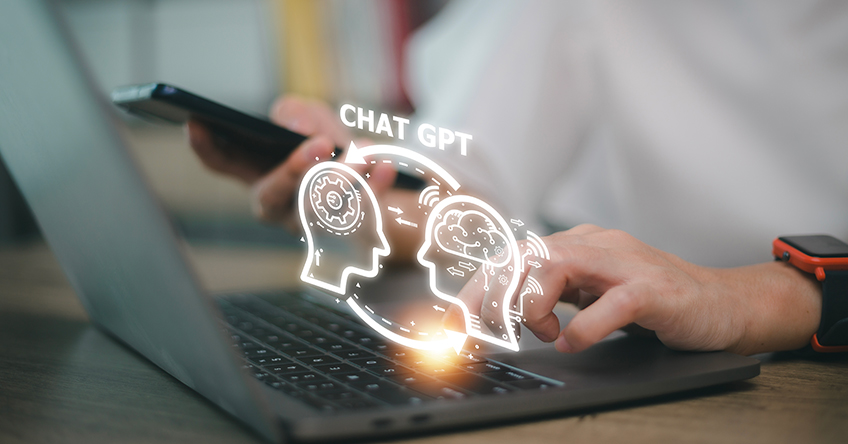ChatGPT in IDP - recent examples
The ChatGPT Hype in IDP
This is not just “yet another blog post about ChatGPT”. We all know about its amazing conversational skills now, so suffice it to say that its skills excel around generating human-sounding language based on natural language prompts. You tell/ask it something and it answers with such convincing language that it is easy to forget to fact-check it. Even OpenAI has admitted that it has a “hallucination problem” and is working on ways to get over that.
This post is about the IDP vendors jumping on the bandwagon and trying to apply ChatGPT or other Large Language Models (LLMs) to something related to their business. Companies want to show that they use cutting-edge technology, so ignoring ChatGPT is unwise, even if it doesn’t naturally fit into their products and use cases.
Let’s take a look at some recent announcements.
Abbyy
Abbyy experiments with integrating ChatGPT as a skill in their Vantage platform.
They are vague about the exact use case but the idea is that Vantage is used to extract data from documents and ChatGPT is used to answer user questions about the extracted data. This doesn’t seem to make much sense with documents such as invoices, as you typically have all invoice data in your ERP system, which has all the tools to analyze it. But applying it to contracts could be interesting, as Abbyy says. Users can ask questions about when a lease contract expires or what the annual rent is. This can be useful but we think that it only works if the source of the answer is displayed as well so the user can fact-check it. If the tool doesn’t point to the proper paragraph as part of its answer, the black box aspect of ChatGPT is a problem.
Super.AI
At super.AI, the ChatGPT hype is explored more theoretically.
The company sees 3 use cases:
We see LLMs helping IDP/UDP solutions in the following three areas:
Improving data extraction accuracy
Responding to natural language queries and commands about critical business information
Simplifying the creation of new UDP and AI apps
Super.AI sees ChatGPT, or rather LLMs in general, as an important technology to improve data extraction accuracy. In our opinion, this depends on what the LLM was trained on. Documents such as invoices don’t display their data as natural language sentences, so a conversational LLM like ChatGPT doesn’t appear to be well-suited for the task. However, uptraining an LLM for this specific purpose is an option. It remains to be seen how well that works.
Using ChatGPT to answer questions is a natural use case, though not a direct use case in IDP. It can be used to provide a natural language interface to the IDP software’s documentation for example and replace or augment traditional enterprise search tools.
Kofax
Kofax has recently published an integration of ChatGPT with their Intelligent Automation platform on their marketplace.
They use it as a tool to summarize text and to analyze the sentiment. The screenshot in the post suggests that you can also use natural language instructions to populate data tables. Text summarization and sentiment analysis are very good applications of ChatGPT and LLMs in general.
Pega
BPM provider Pega recently announced an integration of ChatGPT-like LLMs into their platform:
An interesting application of generative AI is a natural language interface that creates a loan approval process, for example. This can at least speed up the process to create a new workflow, but can probably not create a production-ready one. It might be an interesting time saver though. Another application they mention is the automatic editing or re-wording of outgoing customer communication in advertisements. The marketer can ask the tool to reword a refinance offer to suit a younger clientele. A third example is the use of natural language to drive SQL-like queries or complex data filters. A command like “Show me all orders placed by state, by month” is a much better user experience for a business user than its SQL equivalent.
Parashift.io
European vendor Parashift focuses on the GDPR-compliance aspect of LLMs and is in the process of creating GDPR-compliant and secure LLMs for use cases such as summarization.
In their latest post, they also ponder “A chat-like way to add and modify document type configurations”. This seems to be similar to Pega, where a natural language command can be used to quickly create processes and configurations that otherwise require many clicks and settings in a complex user interface.
Laiye
Laiye provides a long list of potential applications of LLMs for their own products, but hasn’t yet created a prototype or announced a specific new feature.
As an application of the technology in IDP they see the ability to classify documents. They think about providing an LLM-based classification model out of the box, which could avoid users having to specifically train such models as they need to today.
Klarity
AP Automation company Klarity announced the integration of GPT-4 into its platform
They use the technology to extract data from documents that are not in standard language, e.g. payment terms, party names in contracts, addresses, etc. According to the news article, this new disruptive technology can augment or replace their prior custom AI models.






